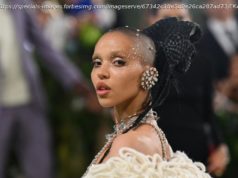The lawsuit filing contains several inconsistencies.
A new lawsuit accusing former athletic director George Perles and the Michigan State University police of refusing to investigate a 1992 rape by Larry Nassar is pockmarked with inconsistencies, raising questions for some and a defense of the plaintiff by others.
Several assertions made in the lawsuit also are disputed by Merrily Dean Baker, who took over as MSU athletic director while the events described by plaintiff Erika Davis allegedly unfolded.
« There seems to be something messed up about the timeline. It doesn’t make sense, » said Baker, who said she never heard of Davis’ allegations before the lawsuit was filed Monday.
Among the issues with the lawsuit: It says Nassar was Davis’s doctor in 1992 when the rape occurred. In fact, Nassar — a former MSU physician who molested hundreds of patients — was still in medical school in 1992, and it’s unclear in what context he might have treated Davis for a 1992 knee injury.
However, a legal expert said it’s « very common » to have errors and inconsistencies in a lawsuit filed just before the statute of limitations expires.
« It happens all the time when a plaintiff comes to a lawyer at the last minute, and the lawyer is trying to meet a deadline, » said Lauren Rousseau, a Cooley Law School professor who teaches on procedures in civil cases
« But you do need to go back and fix it, » Roussau said about errors and inconsistencies, and those corrections are typically via an amended complaint.
Davis’ lawsuit was filed on Monday, Sept. 10, the final day that Nassar victims assaulted between 1996 and June 2016 could file a claim under Michigan’s statute of limitations.
Nassar-inspired legislation may not cover 1992 rape case
Jordan K. Merson, the New York attorney who drafted the lawsuit, is « not taking media questions at this time, » according to the woman who answered the phone at Merson’s Manhattan office.
The plaintiff, Erika Davis of California, and Martha Ludwig, a former MSU field hockey coach who is referenced in the lawsuit, also could not be reached for comment.
Michigan State University declined to answer questions beyond a statement issued Tuesday.
According to the lawsuit, Davis was a 17-year-old in 1992 who was attending MSU on a field hockey scholarship. After a knee injury at a spring practice, Ludwig referred Davis to Nassar for treatment, the lawsuit says.
Davis was sexually assaulted during her appointments with Nassar, the lawsuit says, including during an incident where she says she was drugged and raped. She became pregnant as a result of that rape, the lawsuit says, and the pregnancy ended in a miscarriage.
The lawsuit also says that Davis told her coach about the rape, and Ludwig went to the athletic department, where Perles intervened to put a stop to any investigation.
Lawsuit alleges Nassar raped MSU athlete in 1992; Perles covered it up
Perles, now a MSU trustee who has not responded to requests for comment, was MSU’s head football coach at the time and also was the university’s athletic director before Baker took over in May 1992.
Davis also alleges that she went to the MSU Police Department several months later and they also refused to investigate.
The lawsuit says that Davis lost her athletic scholarship after going to police. It also suggests that Ludwig lost her job after confronting Perles.
Among the questions about the lawsuit:
1. Nassar was not a doctor in 1992.
The lawsuit says when Davis saw Nassar in 1992, « he was a renowned orthopedic sports medicine physician, well respected in the gymnastics community and the team doctor of the United States Gymnastics team. »
In reality, Nassar was still a student at MSU’s College of Osteopathy in 1992. He didn’t become a doctor until his graduation in 1993.
Nassar made his name in the sports world in 1996, when he was team doctor for the U. S. Olympic gymnastics team for the first time. He was hired by MSU in 1997 as a sports-medicine doctor.
Before becoming a doctor, Nassar worked for years as an athletic trainer and it’s possible that he treated Davis in that capacity. But it’s unclear whether he was on the MSU payroll at that time.
2. Michigan State had a new athletic director when Perles allegedly intervened.
According to the lawsuit, Davis told her coach, Ludwig, about the rape and Ludwig « confronted » Nassar in May 2018.
« The coach then complained about what Defendant Nassar did to Plaintiff Erika to the current Athletic Director at Defendant Michigan State University. George Perles, former Athletic Director at Defendant Michigan State University, intervened » and stopped an investigation, the lawsuit says.
« That makes no sense, » said Baker, who became MSU’s first woman athletic director on May 18,1992.
She adamantly denies that she ever heard of Davis or her allegations before this week, and said Perles wouldn’t have been in a position to intervene if he had already left the AD job.
« I never heard a breath about this situation, ever, » she said. « This must have happened before I got there. There’s no way I would have forgotten that. »
But if it happened while Perles was still athletic director, Baker said she’s « confounded » why Davis and/or Ludwig never came to her.
« I’m struggling to understand why I didn’t hear something about this from someone » in the spring or summer of 1992, Baker said.
Baker, who now lives in Florida, said she most certainly would have taken action. « Rape is a crime, » Baker said. « How could anybody hear those words and say, ‘It’s not my problem?' »
Moreover, she said, investigating a sexual assault reported by a student athlete is required by Title IX — and Baker was an expert and outspoken proponent of the federal law.
« Whoever didn’t report it was breaking the law, » she said about Davis’ allegations. « My approach was that if you even heard a breath of rumor about a sexual assault, you investigate. »
3. Baker, not Perles, was the athletic director when Davis allegedly went to MSU police.
From the lawsuit: « In October of 1992, Plaintiff Erika and her friends went to the Michigan State University police department and reported the rape. The police told them that since she was an athlete, she had to report it to the athletic department.
« The detective explicitly told them that he was powerless to investigate anything that takes place to the athletic department and to go to the athletic department, » the lawsuit said. « Plaintiff Erika explained that the athletic department already dismissed it and the Sergeant responded that George Perles is a ‘powerful man,’ and she should just drop it. »
By October 1992, Baker had been the MSU athletic director for five months, and she says MSU police would or should have known that Baker would have fully supported Davis in filing a criminal complaint against Nassar.
It’s unclear why MSU police would reference Perles, then MSU’s head football coach, about a rape case involving a woman field hockey player and a MSU medical student.
Perles « wouldn’t have anything to do with that » in October 1992, Baker said.
4. The lawsuit suggests Ludwig, the MSU field hockey coach, may have been fired as a result of confronting MSU officials about the alleged rape. But Ludwig stayed on to coach another season.
This part of the lawsuit is especially confusing. After Ludwig heard about the rape, according to the lawsuit: « George Perles, former Athletic Director at Defendant Michigan State University intervened and the charges were dropped against the coach, but she was forced to return the video, resign and sign a non-disclosure agreement.






